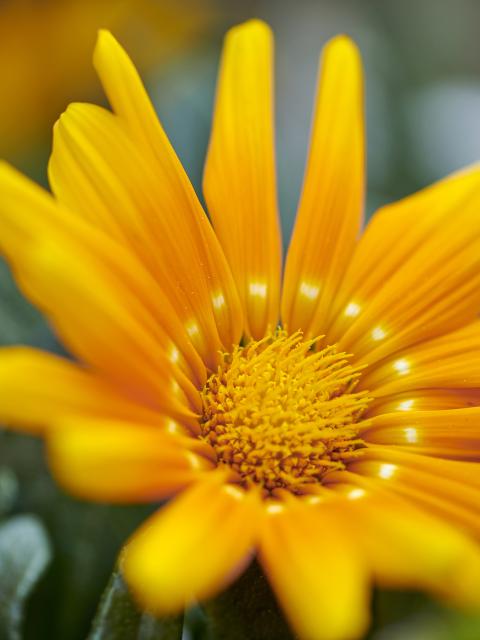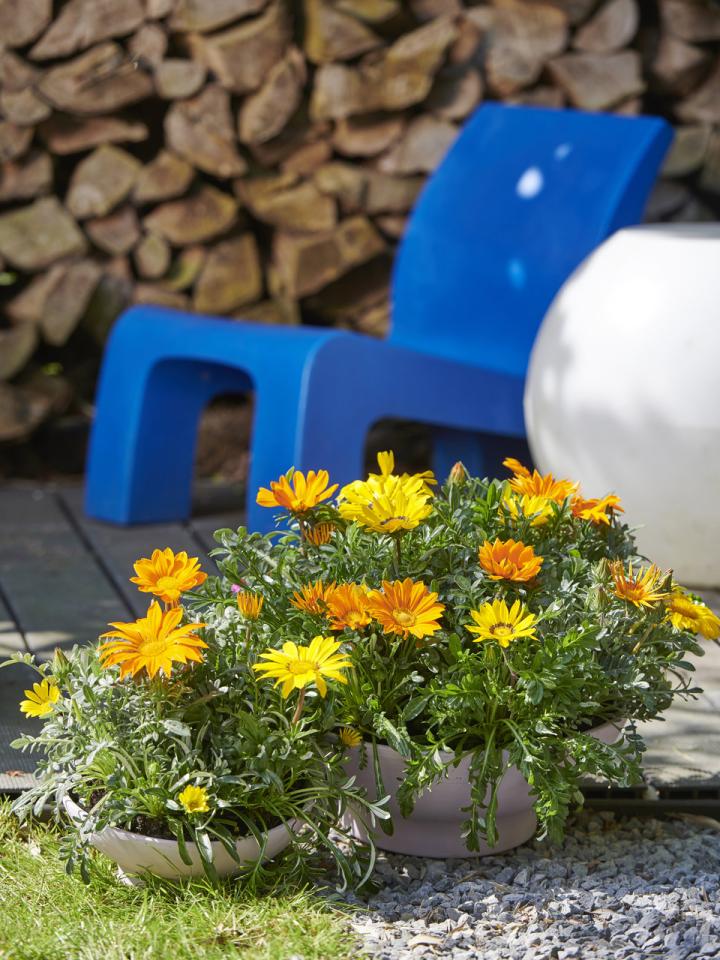In full sun Gazania opens its big flowers completely, and then closes them again in the evening and when rain is due. It’s worth taking a close look at the flower’s heart. The shiny core is surrounded by upright stamens, which in turn are surrounded by darker flames on the petals. It’s a real work of art. Gazania produces a host of flowers, and has attractive pointy green leaves that have some white hairs on the underside. This garden bloomer is available with yellow, orange, white, red, purple and bicoloured flowers that attract butterflies and bees, grows to a height of around 25 cm, and flowers from June to October.

A fine evolutionary trick
Gazania is a member of the daisy family, and grows in South Africa. The plant is native to the unique landscape of Namaqualand, the country’s wildflower region. It’s a herbaceous plant with some 30 species found in the wild. Some of these not only close their flowers, but also rotate their leaves at night. This places the woolly underside on top, which probably helps the plant to absorb the morning dew in dry areas.
Trivia
-
The scientific name Gazania is named after the Italian botanist Gaza. In Latin ‘gaza’ also means ‘riches’, a reference to the fabulous colours which also give us the English common name ‘treasure flower’.
-
In many other languages the common name – middaggoud in Dutch, Mittagsgold in German – refers to the fact that the plant likes to have a lie-in and only opens fully around midday, when the sun is at its strongest.
-
Because Gazania can tolerate some drought, the plant is suitable for the hot summers that are predicted for the future.





